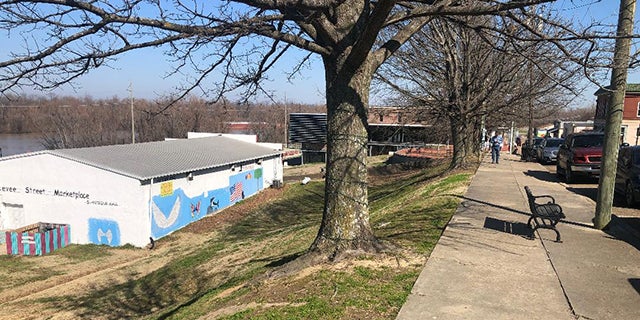Looking back: The west side of the 1000 block of Washington Street: part II
Published 10:41 am Monday, February 26, 2024

- Pictured is the west side of the 1000 block of Washington Street today (submitted photo).
While the west side of the 1000 block of Washington Street is devoid of buildings today, prior to the 1940s and urban renewal in the 1970s, it was the home of ten buildings housing businesses and residences.
The fourth building (1016) and the rest of the buildings on the block were one-story commercial buildings. 1016 was built in about 1893 and in that year housed the Bellizia Brothers and Company Italian Orchestra that advertised that it provided music for concerts, balls, parties, and receptions. In 1906, it was the location of Henry Speyerer Meat Market and Coley Harrel, shoemaker. By 1911, Mrs. Frances Palermo operated a grocery in the building and did so as late as 1935. In 1954, an article in The Vicksburg Post reported that Pfc. Charles Cunningham, whose residence was in 1016, was serving in Japan with the 2nd Battalion, 3rd Marine Regiment. Mr. and Mrs. Jessie Dobbs Sr. and their daughter and son-in-law, Mr. and Mrs. Dalton Johnson, lived in the building in 1958. 1016 was demolished by the 1970s.
The next building, 1012 – 1014, was also built about 1893 and was a saloon until about 1911, first operated by F. Dornbusch, then N. C. Cannon, and finally by John Bianchi. In 1911, Charles A. Morris sold soft drinks here, followed in 1914 by Nick Kelomis operating a lunch counter and then by Zach Lewis who, from about 1918 to 1929, served patrons in his restaurant, Zach’s Place. This building and the others north of it were demolished prior to 1948.
1010 Washington Street was built in 1886 and housed a barber and clothing store and then a variety of occupants including A. Tvargosky Shoes (1887), the Mississippi Benevolent and Protective Association Hall (1889), John Ford’s Grocery (1890), Henry
Row (who in 1893 advertised that he would clean water closets, dig vaults and clean cisterns), C. C. Maas Furniture (1903), Barkin Brothers Shoes (1906), Ike Johnson’s Restaurant (1911-1914), Cora Robinson’s Restaurant (1918-1921), H. B. LaHatte and Company’s “Square Deal Grocers” (1922), Susan Red- field’s Restaurant (1924), and Mills Lunch Room (1929).
Just to the north of 1010, 1008 Washington Street was built prior to 1886 and was a small one-story frame building that housed a lunch counter in its early days as well as barber F. J. Foote (1906). Later it was the restaurants of Willis Johnson (1911), Mittie Hansbure (1914), and Ida Lattimore from about 1918 to after 1929. The next building to the north, 1006, was most likely built at the same time as 1010 and was rented by a variety of business owners over its lifetime. These businesses included a grocery (1897), shoemaker David Feder (1906), jeweler James Mayfield (1911-1914), barber J. M. Head (1918), Morris Osborne Restaurant (1921), and barbers F. B. Bell (1924), Douglas Madison (1929), and William Jones (1935). David Feder moved his shoemaking business from this building to the building north of it, 1002, in about 1911 and stayed until about 1914. Prior to Feder, C. J. Miller operated one of his two liquor and cigar stores in the building from 1901 to 1904. Feder was followed in 1921 by James King, a fisherman, and then S. A. Bingham, a barber, from 1924 to 1929 and the Savov Barber Shop in about 1935.
1000 was the last building on the block and like the other three to the south, was built prior to 1886. Earlyon, B. Rosenberg re-covered umbrellas here (1895) and then C. Edwards operated a furniture store from about 1902 to 1906. Part of the building from about 1906 to 1911 was the drugstore and doctor’s office of Dr. H. H. Proctor. Grocers pedaled their wares for the remainder of the life of the building, including George King (1918), Sophia Ameen (1921), James King (1924), and G. M. Nassour (1929). The north half of the block from 1000 to 1014 has been empty since before 1948 and the south half has been
vacant since urban renewal in the 1970s.
Nancy Bell, Vicksburg Foundation for Historic Preservation





